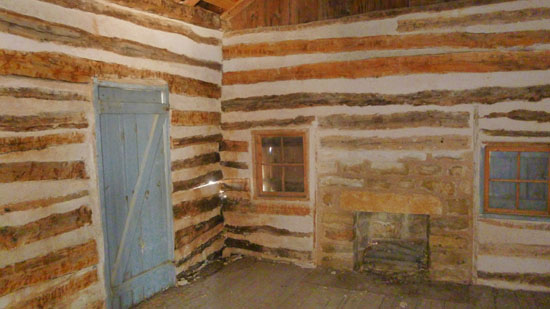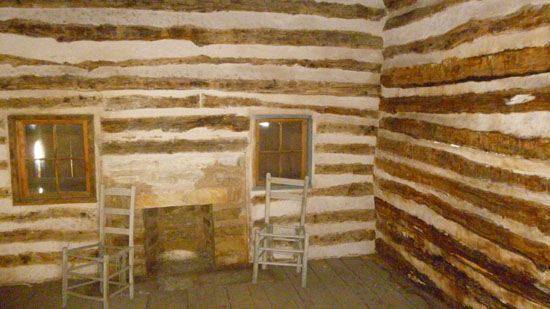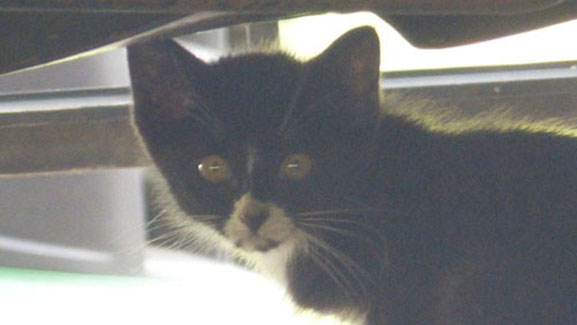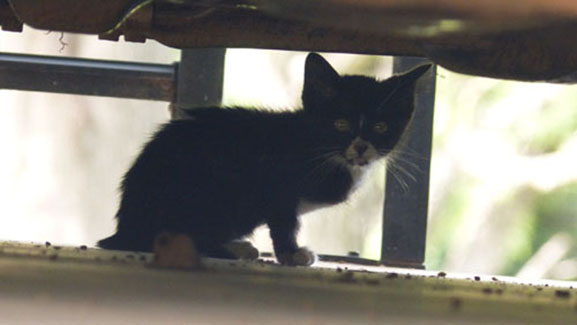


 |
July 3-6, 2015: Fourth of July with Prudence in San Antonio |
 |
June 28, 2015: A Visit to the Dallas Arboretum |
 |
Return to the Index for 2015 |
This week, for only the second time in the 25 years I have known Fred, I am going with him to DeLeon to his Mother's house. The reason is fairly simple. We are going to spend the 4th of July with Ron and Prudence and Guy and Nancy and Karl in San Antonio, and it makes little sense for Fred to come all the way back to Dallas after his visit to collect me and then drive to San Antonio. It is much shorter to drive directly from DeLeon. I can't stay with him at his Mom's house, of course, so I am going to drop him off and go find a motel in Comanche, Texas, about ten miles south. I will spend the night there and then pick Fred up from his Mom's house tomorrow and we will drive directly to San Antonio from there.
Getting to DeLeon and Fred's Mom's House
|
From the Kroger, we head south on Inwood/Hampton to I-30, and take that west to Fort Worth. We stay on I-30 through Fort Worth, eventually joining I-20 and we continue west. Just past Thurber, we leave the interstate and take a Texas highway that leads straight south to DeLeon. Along the way, we pass quite near the house where Fred's Aunt Charlotte lives.
We go through DeLeon and continue south on Texas Highway 16, turning off on a county road about seven miles south of DeLeon.
|
About four miles east of Highway 16 we turn off County Road 2318 on a private road that leads north through the pecan orchards. A mile north on this road and we come to what you'd consider Mrs. Nabors' driveway; at least that's where her mailbox is, and since mailboxes are usually at the bottom of your driveway, that's why I think of this as her drive. We take a route that leads along the edges of the orchards, zig-zagging east, north and then finally a bit east again- about a half mile all told, and we reach Fred's Mom's house.
If you want to see some pictures of Fred's Mom's house, you can look at some that appear on the various Miscellaneous pages for some earlier years, or at the previous trip I made down here with him- October 4-5, 2011.
|
The house itself is a simple A-frame, with a carport on the left wing (although you can't really tell that from this aerial view).
Anyway, when we pulled up to the house, Fred began unloading the groceries and his own stuff. I did help, of course, but Mrs. Nabors being very reluctant to deal with anyone but Fred and her sister, Charlotte, I didn't get to go inside or even greet her. That's just the way she is.
Once Fred was all unloaded, he told me when to pick him up tomorrow and I headed on down to Comanche.
Getting to Comanche
|
Comanche is a typical Texas small town; Fred and I have driven through quite a few of them over the years. Most of these small towns were laid out on a grid, that practice having to do with how land was allocated in the nineteenth century. If not at the outset, certainly later on, most of these towns had a crossroad in the center, so that roads could lead out in all directions to the farms and homesteads that clustered around these towns. Another standard aspect is the siting of the courthouse/city hall right in the center of town, usually in the middle of a block reserved for that purpose.
In Comanche, which was so very typical, Highway 16 and Central Avenue (actually US Highway 67, which goes northeast from here, passing through Cleburne, where Fred's stepmother lives, and going all the way to Dallas) were the central intersection, in this case located at the southeast corner of courthouse square. As it turned out, we would take Highway 16 south tomorrow to San Antonio.
The first order of business was to claim my hotel reservation and get settled in. All I had to do was turn left on Highway 67 and go about a mile and a half to find the Best Western on the left.
|
I wanted to explore Comanche, but first I wanted to stock up on something to eat later on for dinner; I didn't want fast food and I didn't want to sit in a restaurant by myself, so I thought I would go to Brookshire's and see if I could find something that I could fix and/or eat in my room. Turns out that I found one of those small rotisserie chickens, some cole slaw and some chips. That, along with some Diet Sunkist set me up.
So I picked those things up and took them back to the hotel and put them in the little fridge. Then, I drove back to the center of town to do some exploring.
Exploring Comanche
|
In 1850, a military road known as the "Corn Trail" came through the site of present-day Comanche to supply area forts and encourage settlement. The town was established in 1856 and the city was incorporated in 1858. The Comanche County Historical Museum features a blacksmith shop, filling station, and doctor's office. A replica saloon depicts the site where gunfighter John Wesley Hardin killed a deputy in 1874.
The best place to start exploring any small Texas town is usually at courthouse square. There, you are likely to find, in addition to the courthouse/city information building, the oldest buildings in the town- and at one time the most prestigious. What has happened over the years, of course, is that almost all of these buildings have been repurposed multiple times, fallen into disrepair, fixed up, repurposed again, and so on. Nowadays, most of them are little shops, restaurants, bars and maybe a small bank or other financial establishment. There are also law offices, since the courthouse is right across the street.
|
With so many pictures, of course, the result is a very long strip. If I size it down so that the whole thing runs across this page with no scrolling, it is so short vertically and so small overall that it is impossible to see much detail. For your amusement (and mine) here is what the picture looked like, scaled down from over 21,000 pixels in width to just 1200:
 |
As you can see, you really can't see much. So here, in a scrollable window, is the full panorama, which will begin, when you first arrive here, at the northwest corner of the square:
Of course, to get all the pictures that I took of the buildings surrounding the square, I had to walk all the way around it, which meant that I got to see all side of the courthouse building as well. Typical of Texas, Comanche County has had several courthouses and two of them remain on the square in Comanche. The current Art Deco structure was designed by the late Wyatt Hendrick of Fort Worth whose architectural achievements receive recognition even today.
|
 |
Comanche County was created in 1856 from parts of Bosque and Coryel counties, and was named by Colonel John Henry Brown of Belton, Texas, for the Indians who had inhabited the prairie at the heads of the Brazos and Leon Rivers. The original settlers were mostly Tennesseans, direted to austin's upper colony by the Texas Company of Nashville, who also gave Texas such place names as Nashville and Franklin.
The main route into Comanche County was the military road the connected Fort Gates (now Gatesville) with Fort Phantom Hill (now Abilene). In the decade following its settlement, Comanche County was cattle country and remains so today. Cotton was planted extensively from 1865 to 1919 when boll weevils destroyed the crop. Peanuts then supplanted cotton in the economy of the county.
But let's get back to the interesting history of the Comanche County courthouse. Before Comanche (the town) existed, a nearby town, Troy, was the county seat. Well, actually, it wasn't. Founded before April, 1857, Troy was part of a tract deeded to Comanche County for the purpose of establishing a county seat. The town was named, as were many in this part of Texas, with names recalling the successful planting of colony after colony from Ilium to Rome to Arthurian Britain and finally to the banks of the Leon.
The town was laid off in the grid traditional in southern towns since about 1800, with a courthouse square in the center and with streets named Water, Elm and Main, partly in imitation of Philadelphia and Nashville. The South Fork of the Leon circled the town site to the south and east, and although the Leon was never navigable, it did reflect the traditional concern that, even in the age of steam, a town should be near a source of water and water power.
Troy applied for its postoffice in 1857, but found that that another Troy (in Freestone County, just off current I-35 north of Austin) already existed. The land agent was asked to substitute other names. One of them was Cora, for prominent local resident Miss Cora Beeman, daughter of a famous military man- Major Alonzo Beeman of Moffat in Bell County. So Cora got its postoffice and became the first county seat of Comanche County.
|
Leaving that building for a while, let's move over to the town of Comanche. In 1859, after the move from Cora to Comanche, the county conducted its business in a one-room building made of pickets- logs placed side by side vertically in a trench. This type of building, used for forts and other utilitarian structures across the South from 1770 to 1860, was not intended to last, and its destruction by fire on March 20, 1862, was noted without comment in the minutes of the Comanche County Court. The county rented a temporary building while it made plans to build a two-story structure fifty feet square “of hewn stone and good plank.”
|
By 1890, the brick building of 1875 was too small, too old-fashioned, for the growing town of Comanche, and the Austin architectural firm of Larmour & Watson was employed to design a new building.
|
This impressive three story building with its tower, striking clock, and clear-sighted Statue of Justice was a landmark between 1891 and 1939. By that time, however, the city and county had grown substantially, and the need for public spaces in the courthouse had outstripped its ability to provide them. In addition, retrofitting the building for more modern conveniences proved to be a daunting task, and so the decision was taken to raze the building and built the current courthouse. It has undergone its own renovations through the years, but remains basically the same Art Deco structure that it was originally.
An interesting side story concerns the original Statue of Justice from the 1891 building. Over the years, it sustained its own indignities. Her scales that are thought to have been lost in a windstorm and were missing by 1908. Before and after she was removed from the 1891 building, she lost a forearm, hand and her symbolic Sword of Justice. There were even some bullet holes courtesy of a long ago target shooter. Today, the statue, meticulously repaired, can be seen in the main hall of the current courthouse. Most unusual is the absence of the traditional blindfold that may allow Comanche's Justice to look carefully at any issue with both eyes.
But what happened to the county's first courthouse, "Old Cora"? Well, the original squared-log room, to which a board side room had been added, passed from public ownership in 1859, and was subsequently used as a residence by T.W. Matthews. Matthews rented it to John Baggett from 1864 to 1869 and sold the house to J.W. Clark in 1879. In 1880 Clark sold his property on the old town square to O.S. Mason, who moved the building to a site near the southeast corner of the original town limits, on the banks of the Leon.
|
By 1963 the building had fallen into disrepair, so the city of Comanche gave Mr. and mrs. A.P. Burks permission to move the building of which the 1857 courthouse was part to their museum in Comanche. There it was again repaired. Through the efforts of W.I.Dixon and the Comanche County Historical Survey Committee, Old Cora was designated a Texas Historic Building in 1965.
In 1983 the Comanche County Historical Commission sponsored the relocating of Old Cora. The Old Cora Commission, appointed by the Commissioners Court, selected the county square as the permanent site, placing the 1857 courthouse near the Fleming oak, the tree under which M.V. Fleming, who surpervised construction of the 1875 courthouse, spent his first night in the county in 1854.
"Old Cora" is open now to the public, and I took the opportunity to go in and have a look around. I stuck my head into both of the rooms off the central hall. You can see them below:
 |
 |
I also stood back near the corner of the square to try to get all of "Old Cora" in one shot, but couldn't get back far enough. So I have settled for stitching together four pictures of the structure, and so here is "Old Cora" in her restored glory:
 |
Clustered around the site of "Old Cora" were a number of other memorials and markers, including what appeared to be an old well.
|
There were also quite a few of those markers commemorating historic events or other points of interest, so I took pictures of all of them so you could read them. Just click on the thumbnails below to do so:
 |
As I was walking over to have a look at the veterans monument in front of the courthouse, I looked back and got a nice picture of "Old Cora" and many of the historical markers clustered around it. You can have a look at that picture here.
As I walked around the east side of the courthouse, I found that they were, apparently, getting ready for the celebrations on July 4th. At one place, there was and electronic board set up, presumably to spell out words during the displays. And of course, there were already lots of American flags flapping in the very light breeze, all around the courthouse. I also took one last picture of an odd sign, one I don't think I'd seen before.
I spent a bit more time walking around downtown Comanche, just looking at the odd shops, before heading back to the Best Western. There, I did some time on the recumbent bike in the fitness room, and then had the dinner that I'd bought at Brookshire's earlier in the day. After that, since it was still light, I took a short walk south from the hotel, just enjoying the evening.
On Friday morning, I waited for a call from Fred to tell me he was ready to be picked up, and when he did call, I checked out and drove back to his Mother's house to collect him. Fred contributed a couple of pictures that he took at his Mom's house of a little tuxedo cat kitten that hangs around there. The cat is impossible to get close to, so Fred had to settle for some pictures like these:
 |
 |
We headed back down Highway 16, back to Comanche, and then continued right south through town, heading down to San Antonio.
You can use the links below to continue to another photo album page.
 |
July 3-6, 2015: Fourth of July with Prudence in San Antonio |
 |
June 28, 2015: A Visit to the Dallas Arboretum |
 |
Return to the Index for 2015 |